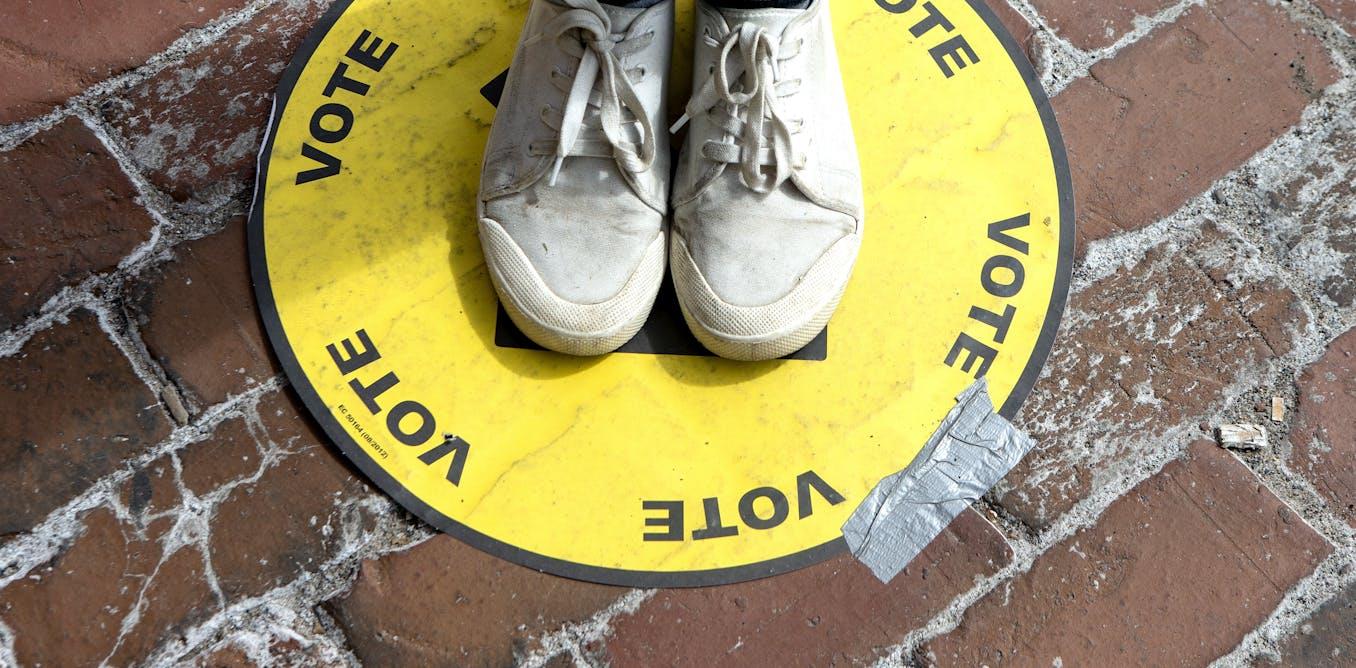
Canadian Mps Need An Incentive To Lower The Voting Age To 16 From 18 - And There's None In Sight
The current debates among parliamentarians about lowering the voting age from 18 to 16 lack this kind of catalyst. While there are some MPs, senators and advocacy groups that advocate lowering the federal voting age , there's no real incentive today to do so.
Debates in Parliament, attempts to pass a Senate bill on lowering the voting age or hosting advocacy summits might keep the issue of the federal voting age in the Canadian news cycle, but are unlikely to encourage parliamentarians to act, according to new research I've conducted.
I've found that unless parliamentarians have an incentive to lower the federal voting age, it probably won't happen.
A voter queues at a polling station to cast a ballot in the September 2021 federal election in Toronto. THE CANADIAN PRESS/Chris Young Common themes over decades
To better understand today's intransigence, it's important to look back to 1970. Until then, there were decades of debates among parliamentarians about whether to maintain a voting age of 21 or lower it to 18.
My research found that if one parliamentarian argued that young people were educated and informed enough to vote, another would argue that youth were not mature enough. If one argued young people wanted to be more involved, another would say there was an insufficient demand for change among young people.
In short, most of the arguments about whether to change or maintain the voting age were subjective judgments made by MPs. This may sound familiar, because the arguments being made by parliamentarians today are quite similar.
My analysis of parliamentary debates about the federal voting age between 1901 and 1970, and then between 1970 and 2022, shows that the types of arguments being made by MPs have changed very little over the decades.
A list of the six major themes of the arguments that were used by Canadian parliamentarians from Jan. 1, 1901 to Oct. 30, 1972. (Author provided)
A list of the six major themes of the arguments that were used by Canadian parliamentarians from Oct. 31, 1972, to June 24, 2022, about lowering the voting age to 16. (Author provided) The impact of 1960s tumult
This finding begs an important question. If the arguments and major themes of both the past and current debates are so similar, then why did the federal voting age change in one period but appears unlikely to change now?
The key difference is the catalyst that occurred during the 1960s that incentivized parliamentarians.
In the late 1960s, youth rose up in both Canada and much of the rest of the world . Young people became more politically active and involved. Some of these activities included protests or political actions that parliamentarians saw as youth acting outside of formal political channels.
In this Pulitzer Prize-winning photo taken in 1970 during the Kent State crackdown on anti-war protesters, a teenaged girl screams kneeling by the body of a student lying face down on the campus after being shot by the National Guard. (AP Photo/John Filo)
The prominence of the events during this period is exemplified by a statement made by Lorne Nystrom of the New Democratic Party in February 1969 in the House of Commons, when he asked his fellow MPs to pass legislation to lower the voting age:
In short, the catalyst for parliamentarians was not so much that youth became politically active, but that they posed a threat to the stability of Canadian democracy if the voting age wasn't lowered.
Rutherford Lester Whiting of the Liberal Party of Canada alluded to this perceived threat later that year in the House of Commons in November 1969:
Read more: Cops on campus: Why police crackdowns on student protesters are so dangerous
Preventing further protestsBoth statements reveal that at the time, parliamentarians wanted to curtail student protests by bringing young Canadians into the formal political process. In other words, Canadian parliamentarians used the act of lowering the federal voting age as a tool to prevent further youth protests.
Eliminating what parliamentarians saw as a potential threat to democratic stability in Canada was the incentive to lower the voting age from 21 to 18.
This kind of incentive is not present today. The arguments being made by parliamentarians on both sides of the debate are nearly identical to the arguments made several decades ago.
In particular, both sides continue to debate whether Canadians below the voting age possess or lack the capabilities to vote responsibly. There's no catalyst that might motivate parliamentarians to consider a lower voting age, or that creates broad consensus across party lines.
If history repeats itself, it appears the voting age will remain at 18 unless activists or Canadians younger than 18 make their voices heard.

Legal Disclaimer:
MENAFN provides the
information “as is” without warranty of any kind. We do not accept
any responsibility or liability for the accuracy, content, images,
videos, licenses, completeness, legality, or reliability of the information
contained in this article. If you have any complaints or copyright
issues related to this article, kindly contact the provider above.


















Comments
No comment